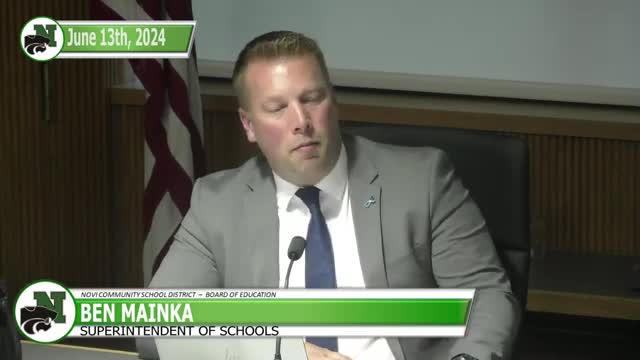Schools consider phone-free zones to combat digital distractions
June 14, 2024 | Novi Community School District, School Boards, Michigan

This article was created by AI summarizing key points discussed. AI makes mistakes, so for full details and context, please refer to the video of the full meeting. Please report any errors so we can fix them. Report an error »

In a recent government meeting, officials discussed alarming statistics regarding smartphone usage among students, highlighting the profound impact on their mental health and cognitive abilities. Data presented revealed that teenagers aged 13 to 17 pick up their devices over 100 times a day, with some exceeding 200 pickups. Additionally, many students spend more than three hours daily on their smartphones, with a significant number logging over ten hours. This excessive screen time is correlated with increased distractions in the classroom, where 54% of students reported being distracted by peers using digital resources.
The meeting also addressed the concerning rise in mental health issues among youth, with a notable spike in depressive symptoms linked to increased screen time from 2000 to 2020. The discussion underscored the need for a shift in educational practices post-pandemic, as students continue to enter classrooms with Chromebooks, further compounding the issue of distraction.
To combat these challenges, officials proposed a pilot program for grades 5 through 8 that would implement a cell phone-free environment using Yonder pouches. Students would place their phones in these pouches upon entering school, allowing for a distraction-free learning atmosphere. The initiative aims to foster better social interactions and focus among students, as evidenced by positive outcomes from similar trials in other districts.
Concerns regarding safety and communication in emergencies were raised, with assurances that comprehensive communication plans would be developed to address parental inquiries. The pilot program is set to be discussed further in July, with hopes of establishing healthier habits for students in the digital age.
The meeting also addressed the concerning rise in mental health issues among youth, with a notable spike in depressive symptoms linked to increased screen time from 2000 to 2020. The discussion underscored the need for a shift in educational practices post-pandemic, as students continue to enter classrooms with Chromebooks, further compounding the issue of distraction.
To combat these challenges, officials proposed a pilot program for grades 5 through 8 that would implement a cell phone-free environment using Yonder pouches. Students would place their phones in these pouches upon entering school, allowing for a distraction-free learning atmosphere. The initiative aims to foster better social interactions and focus among students, as evidenced by positive outcomes from similar trials in other districts.
Concerns regarding safety and communication in emergencies were raised, with assurances that comprehensive communication plans would be developed to address parental inquiries. The pilot program is set to be discussed further in July, with hopes of establishing healthier habits for students in the digital age.
View full meeting
This article is based on a recent meeting—watch the full video and explore the complete transcript for deeper insights into the discussion.
View full meeting
